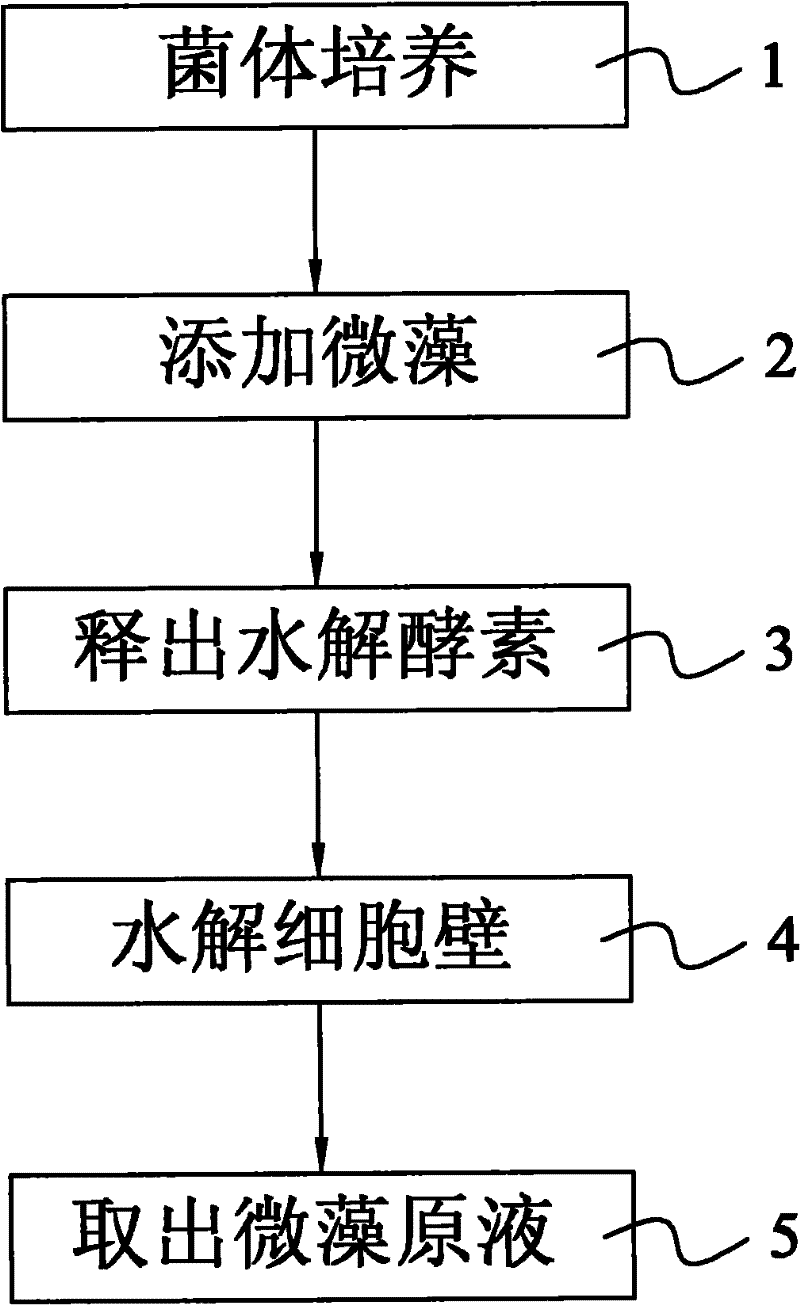Method for disrupting cell walls of microalgae
A cell wall, microalgae technology, applied in the field of microalgae, algae content, algae biotechnology, extraction of the microalgae field, can solve the problem of reducing the efficiency of the absorption of microalgae nutrient content, and the loss of sensitive active substances. Liveness, poor functioning, etc.
- Summary
- Abstract
- Description
- Claims
- Application Information
AI Technical Summary
Problems solved by technology
Method used
Image
Examples
Embodiment Construction
[0009] The present invention relates to a method for microalgae cell wall breaking, (please refer to figure 1 ) The method mainly includes cell culture 1, adding microalgae 2, releasing hydrolytic enzyme 3, hydrolyzing cell wall 4 and taking out microalgae stock solution 5; wherein:
[0010] Bacteria culture 1. The types of bacteria are mainly microorganisms that can secrete cellulolytic enzymes, such as fungi, bacteria, actinomycetes, etc. At this stage, a predetermined number of bacteria are cultivated in a predetermined space through the culture medium , so that the bacteria can continue to derive and reproduce in the space, and then add microalgae in the culture space according to the number of bacteria;
[0011] Adding microalgae 2 mainly adds the microalgae to be decomposed into the space for cultivating the cells, and the amount of the added microalgae is matched with the cells so that the actual number of cells can completely decompose the cell wall of the microalgae ...
PUM
 Login to View More
Login to View More Abstract
Description
Claims
Application Information
 Login to View More
Login to View More - R&D
- Intellectual Property
- Life Sciences
- Materials
- Tech Scout
- Unparalleled Data Quality
- Higher Quality Content
- 60% Fewer Hallucinations
Browse by: Latest US Patents, China's latest patents, Technical Efficacy Thesaurus, Application Domain, Technology Topic, Popular Technical Reports.
© 2025 PatSnap. All rights reserved.Legal|Privacy policy|Modern Slavery Act Transparency Statement|Sitemap|About US| Contact US: help@patsnap.com


